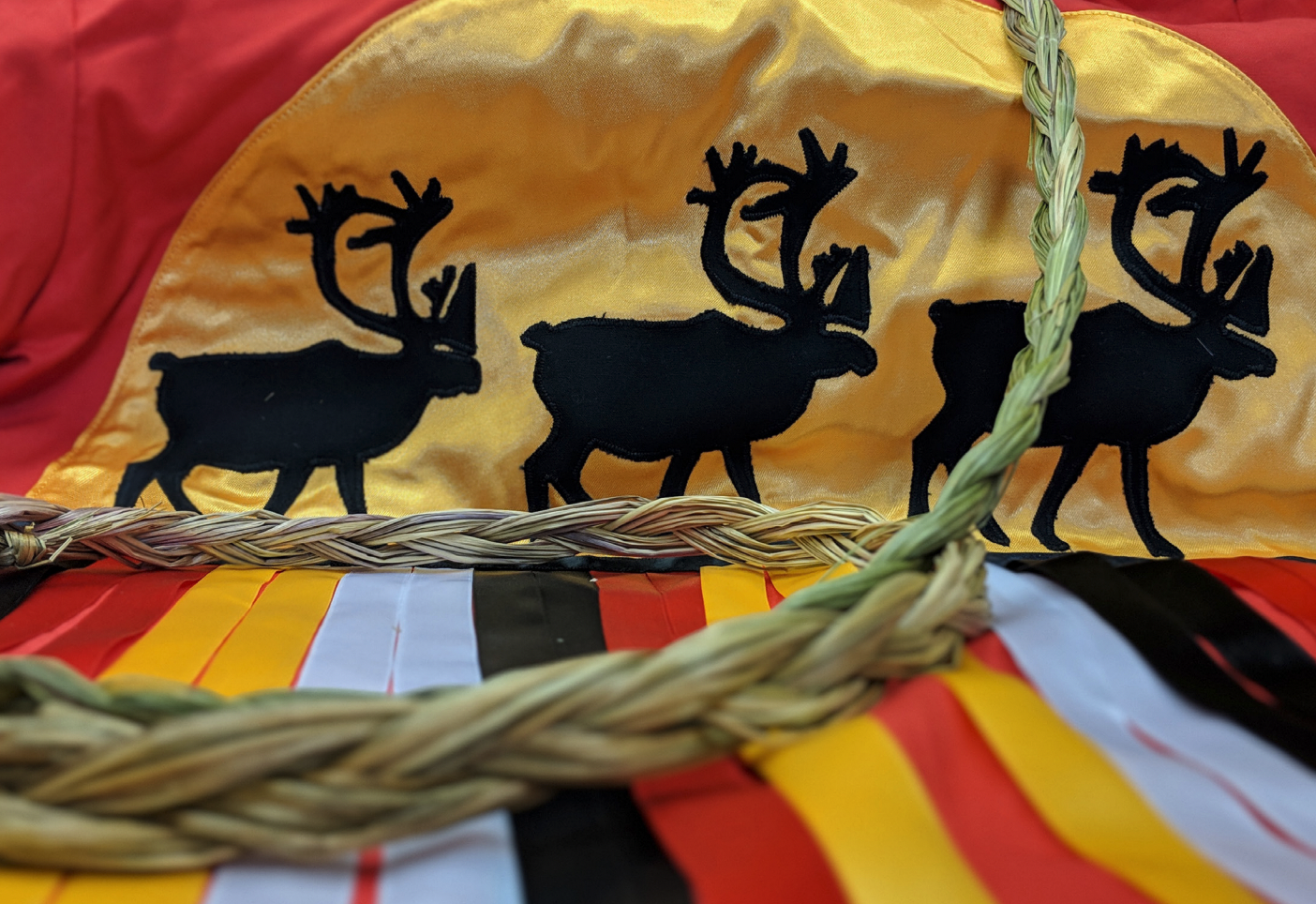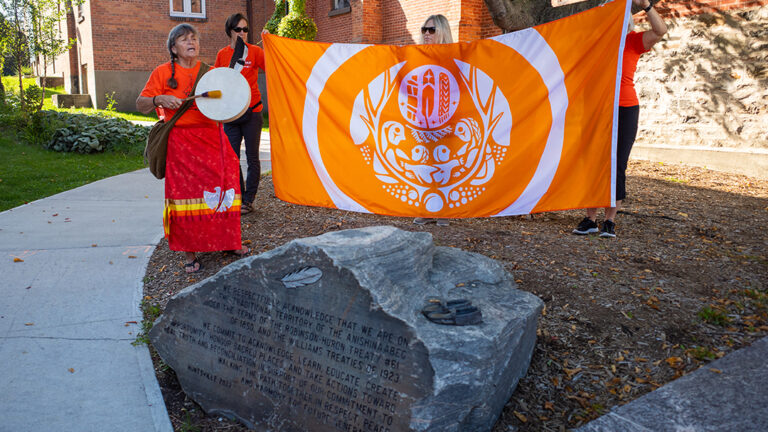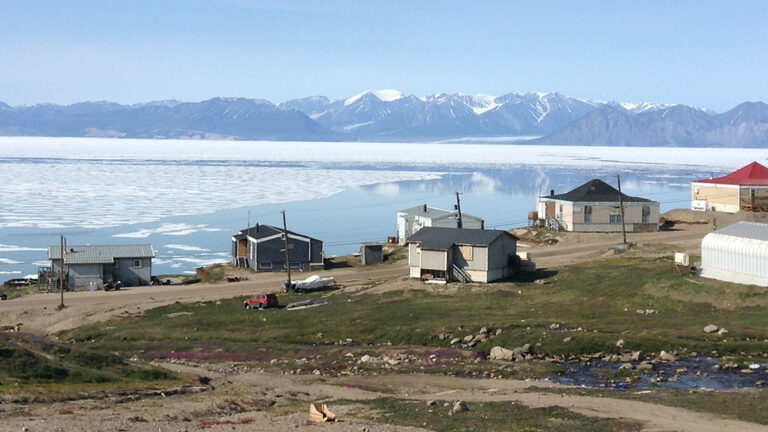Indigenous communities across Canada often face critical housing shortages, and the Mi’kmaq of Newfoundland are no exception. The Flat Bay Band’s No’kmaw Village Tenants Strategy helps people with lived experience craft strategic housing plans that will allow more Mi’kmaq to return home.
Finding affordable and culturally appropriate housing is a difficult task across the country. In Newfoundland and Labrador, many of the roughly 60,000 Mi’kmaq residents have left their communities in search of employment, services and amenities elsewhere.
“Many [Mi’kmaq] are struggling and are at risk of being homeless,” explains Liz LaSaga, chief executive officer and band manager at No’kmaw Village, a self-governed Indigenous community located on Newfoundland’s west coast, operated by the Flat Bay Band Inc.
“Maybe a Flat Bay member is living in St. John’s, and their rent is six times the costs it is here. They could entertain moving back home to the rural community.”
The challenge, however, is that community housing offerings in rural Newfoundland are low, with very little available outside of the offering of the provincial housing corporation. LaSaga, who has been working on creating affordable housing through the Ktaqmukuk hub for rural homelessness project, a recipient of a Reaching Home Indigenous NL grant, is familiar with assisting people who are homeless, couch surfing or at risk of losing their housing.
“The need is so big, and I wish we could do more that we’re doing right now,” shares LaSaga.
With over 300 clients and numbers growing daily, LaSaga has gained a greater understanding of Mi’kmaq housing needs and is working on a new project that could benefit all Mi’kmaq in the region.
Blueprint borne of collaboration
Spearheaded by the Newfoundland Alliance of Rural Mi’kmaw Nations, an amalgam of all identified rural or isolated Mi’kmaq communities and bands on the island of Newfoundland, the No’kmaw Village Tenants Strategy project puts renters at the centre of a strategic planning process. It’s a new concept in Newfoundland, says Sarah Nash, a tenant strategy facilitator at No’kmaw Village.
“We’re just getting started. Right now, we’re doing the research and [organizing] a formation committee. There [will be] five band chiefs and reps from each community.”
The plan is to recruit and train tenant representatives with lived experience of housing precarity and homelessness, who will then guide a participatory strategic-planning process in five rural off-reserve Mi’kmaq communities. The end goal is to establish a plan tailored to each community’s needs and resources. Through the process, the tenants will get connected to services within their home communities.
“We have really good partnerships with other non-profit organizations who help clients and provide supports and services. We’re going to talk to people, and get first-hand experiences on barriers they’re facing, and we will try to implement ways to overcome [these] barriers,” adds Nash.
The Community Housing Transformation Centre has awarded $150,000 to support the initiative.
“[The grant] is helping us find a solution for rental issues [faced by Mi’kmaw tenants] in the province. By the end of this project, we’re going to have a very good idea who needs help in our communities,” LaSaga adds.
Dream estate
The No’kmaw Village Tenants Strategy project was inspired by another Flat Bay Band Inc. success story, the No’kmaw Village Rent-to-Own Housing Initiative. The housing pilot was conceived two years ago by LaSaga and Clifford Young as an effort to solve his lifelong battle with homelessness.
Sadly, Clifford Young passed away unexpectedly and did not see the completion of the project or fulfill his dream to move in.
The two-unit duplex, soon to be named Cliff’s Dream Estate, was bought and renovated last year. It is now home to a couple and a young man, previously homeless, with mental and physical challenges.
“The building was just a structure on the lane next to the band office [and] we renovated it into a duplex,” explains LaSaga.
Equipped right down to the toothpaste, the heat-efficient and upscale units were also fitted with a grow room for marijuana. The rent-to-own amount is determined based on the surplus of the funding allocation. If a home costs $200,000 to build but funding received by Flat Bay Band Inc. covers $115,000 of the cost, then the renter becomes owner once the total rent paid covers the difference.
And the proximity to the band office means residents have access to an array of services and support.
“They come here to get food cards or to use the greenhouse or to get a ride to town to see the doctor in our community van. We also have a little thrift store here, so they come, and they just take whatever they need. [Then there’s] the fitness centre, the wellness clinic, culture and crafts.”
And there are more rent-to-own initiatives in the pipeline: one of the new homes being renovated was allocated to an expecting couple and a young mom of two who has recently lost her husband to cancer—both families were homeless.
Lessons learned
LaSaga says it is important to build and renovate homes based on people’s needs and lifestyle and this can only be done by involving them in the process. And the No’kmaw Village Tenants Strategy provides the perfect opportunity for active tenant involvement.
After all, its intention is to make sure Mi’kmaq tenant participation and social inclusion become the catalyst for a rental strategy that honours custom designs, location and community services for long-term success in the rental market.
“Hopefully, within this strategic plan, each of the five Indigenous communities has buildings they are able to retrofit,” LaSaga adds. “And we’re going to teach them to do what we’re piloting here. The idea is to say, ‘here are the lessons learned, here are the best practices’ and help mentor the other rural communities to do the same … or do it better.”
Photo: Comprehensive Community Plan, Qalipu First Nation



